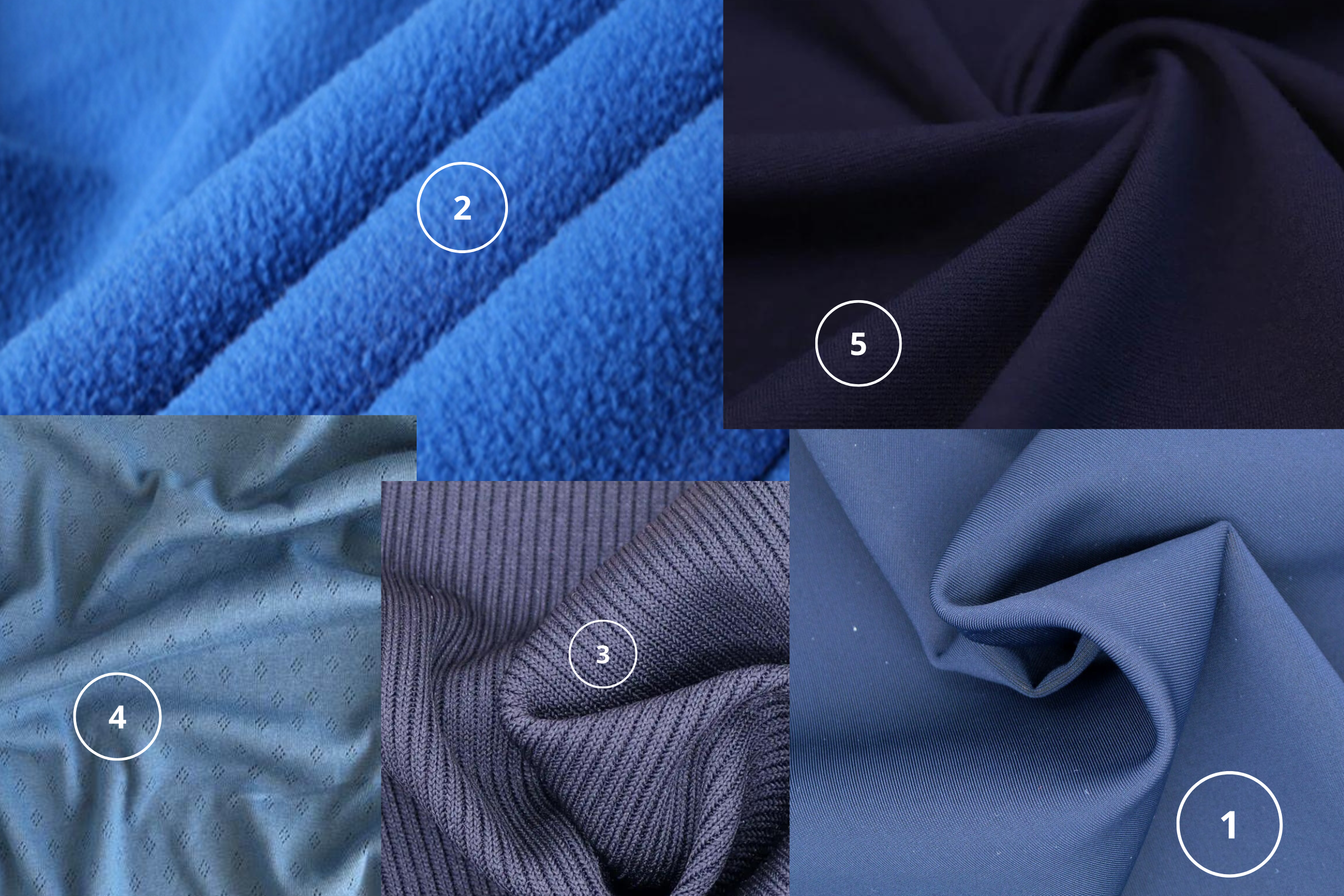Fabric 101
how to take care of your clothes so they look better and last longer
I wish there was a class in high school that taught you how to care for your clothes. Seems simple enough right? But if you’ve been around long enough you know it’s not so cut and dry. We’ve all bought a piece of clothing we LOVED only to hate once it was washed because we didn’t know what we were doing. Understanding fabrics, when buying and cleaning them, is such an overlooked skill.
This is also one of the biggest underrated components of the sustainable fashion conversation. We focus a lot on not overbuying and buying pieces that are made sustainably but focusing on the care of your clothes will extend their lifetime reducing the need to repurchase over and over.
I find a lot of pride in caring for my clothes and see how that attention spills over into how I dress and feel in those clothes. I thought you might love a little tutorial on basic fabrications, how to care for them, and what to look for when buying.
First things first. All fabrics fall into one of these categories; Woven, knit or non-woven. Wovens are created by weaving threads on a loom forming a criss crossing pattern, because of this they follow curves nicely. Knits are made by looping yarns together. Due to this, knits always stretch a little. Nonwovens are any fabric made from fibers or non fibers without weaving or knitting. A good example if this is leather and faux leather.
Below you will find a simple yet comprehensive list, a great place to start when it comes to understanding fabrics and ultimately the clothes you buy. Enjoy!
1) voile 2) chambray 3) sateen 4) pique 5) oxford 6) poplin
COTTONS
The workhorse of any wardrobe. Found in our favorite jeans, classic button up and LBD. Cotton is so versatile, can be used formal or casual, warm or cold, delicate or durable. The most important thing to know about Cotton is that it shrinks. Casual cotton garments generally machine wash well but to avoid any shrinkage its best to line dry, flat dry or tumble dry on very low heat. Finer cottons, like the kind you find in higher end stores, should be dry cleaned.
Types of Cotton
Baptiste- one of the softest and drapist cottons, sometimes used as a lining.
Voile- similar to Baptiste but more translucent. Not suitable for full coverage
Poplin- tightly woven fabric with crisp elegant finish
Oxford- interchangeable with the style of shirt, a sturdy shirting fabric
Pique- is a type of dobby weave often with waffle or honeycomb texture
Gauze- gathers and drapes beautifully, also comes in wool, silk, and synthetic versions
Organdy- the stuff of petticoats, made by dipping in an acid bath. Crisp and sheer makes it perfect for base embroidery and lace.
Dotted Swiss- named after the country of its origin, it’s a lightweight cotton with a dot design.
Sateen- the cotton equivalent of satin
Flannel- medium to heavy weight fabric marked by a brushed or napped surface
Moleskin- sturdy and structured with a matte finish
Plaids- the crisscrossing pattern is traditionally dyed before being woven, but some are printed on the surface. Lightweight cotton with this pattern is called madras.
Gingham- medium weight with a check pattern
Seersucker- known for being cool to wear and wrinkle resistant
Chambray- similar to denim, typically light in color.
Muslin- a stiff, plain woven unprocessed cotton, typically used to make prototypes,
Twill Weaves- A diagonal weave structure that makes it durable, Chino are a popular Twill Weave.
Corduroy- features napped rows called wales that range from wide to fine
Velveteen/Cotton Velvet- most velvet is made from silk, this is made from cotton and is less shiny.
Linen- not cotton but made from the fiber of the flax plant. Known for its coolness in hot weather, how it gets softer over time and its easily wrinkly nature.
Denim- an iconic coarse fabric known for its indigo color. Experts believe that you shouldn’t wash your jeans for at least a year, spot clean stains and place them in the freezer to minimize any odor. This keeps the color longer and lets the denim form to your body.
1) boucle 2) tweed 3) crepe 4) twill 5) gauze
WOOL
Known for its warm qualities, wool is a group of fabric made from animal hairs. It wicks moisture away making it ideal for winter coats and jackets. Wool can shrink and for that reason it’s safest to dry clean only. Also watch out for moths that love to chew holes in wool, cedar inserts are very helpful for this.
Types of Wool:
Boucle- the french word for curly. Made of fabric that is looped (curly) creating lots of texture.
Challis/Vile/Gauze- much lighter than what we think of wool, but these fabrics make delicate garments and accessories.
Checks/Plaids- historically known as tartan in Scotland, a popular symbol of preppy and punk.
Crepe- light-to-medium fabric popular for just about anything.
Flannel- more polished and luxurious than the cotton version.
Gabardine/Twill- known for its diagonal ribs, resist wrinkles and are built to last.
Tweed- water resistant, rough and typically unfinished.
Cashmere- softer and warmer than wool, made with fibers from goats.
1) tricot 2) fleece 3) rib knit 4) pointelle 5) ponte di roma
KNITS
Formed with interlocking loops of yarn making it stretch naturally. Knits are comfortable, soft and move with the body. There are two categories, stable (retains its shape well) and unstable (stretching far beyond its original size). Each fabric's composition of knit is different so read the labels. In general avoid hot dryers.
Types of Knits:
Jersey- the most common knit, light to medium weight and modest stretch.
Tricot- closely knitted fabric that doesn't stretch.
Ponte di Roma- provides structure and compression, its solid expensive look smoothes away imperfections.
Rib Knit- expand and contract very well, made up of vertical lines.
Fleece- has a soft fuzzy nap on both sides
Sweatshirt Fleece- has a smooth and a fuzzy side and curls up on the edges.
Terry Cloth/French Terry- made of loops on both sides, not just for towels.
Waffle Knit- has a three-dimensional square surface, good at retaining heat.
Pointelle- named for a technique that creates open work patterns on the surface.
Activewear Knits- made primarily of synthetic fibers.
1) crepe de chine 2) charmeuse 3) brocade 4) chiffon 5) tulle
SILK
Silk was once reserved for only emperors and dignitaries in China. Now used by all to stay cool in summer and warm in winter. Its movement against the body and how it feels on the skin adds to its popularity. Silk should be dry cleaned, as washing it will make it rough.
Types of Silk:
Charmeuse- has a satin side and a matte side, both look great.
Satin- mainly used as an adjective, refers to a smooth appearance created by a weave of long floating yarns.
Duchesse satin- comes in heavier weights with a matte and a satin side.
Chiffon/Georgette- sheer, and ethereal. A favorite of costume designers
Tulle- a netting found mainly in ballerina tutus and brides veils
Gazar- a plain lightweight with a moldable quality
Organza- sheer and nearly transparent
Crepe de Chine- lightweight with a subtle texture, elegant without being showy
Taffeta- used on party dresses and ball gowns
Brocade/Jacquard- rich-looking typically made with floral, geometric or animal patterns often with metallic highlights
Velvet- has been the fabric of nobility for ages. Made by a dense raised pile and heavy drape.
Bonus! A Real Time Shopping Cheat Sheet:
Touch Test
Quality fabrics feel different. Most of you know this to be true, and it’s not just about cost here. Learn to trust your instincts when shopping for clothes, whether it’s a knit or woven, there are levels of quality.
Pill Test
Rub a fabric 20 times in a circular direction and see what happens. If it’s a pill-y mess, leave it.
Scratch It
Some fabrics are naturally unfinished and will be a little scratchy like Harris Tweed, but most are just scratchy because they're not finished correctly. Hold the fabric up to your cheek and decide if it’s too uncomfortable to deal with.






